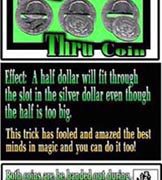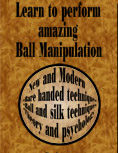Can anyone explain why magicians believe stained wood products have more value than painted? Some believe that painting something reduces the value. In reality the process of painting is much more time consuming. Granted, nice pieces should be shown off when there is exceptional craftsmanship. If the project has dovetails, inlays or uses exotic woods you wouldn’t want to hide the craftsmanship. Exceptions include stage shows where the performer needs colorful or bright props. The inside, of a prop, may be in contrast to the outside to either accentuate the properties of the effect or for technical reasons. The other reason paint might be applied over dovetails is because the functionality of the construction demands strong joints without extra material used inside or out. In this case the dovetails or finger joints serve a function and are not necessary to the performance of the effect. Consider this: The focus of a stage illusion is what action and storyline take place. Perhaps in the movies, and epic film must rely on the scenery to tell the story. To a certain degree this holds true for the magician. In the end however, the magician must be the focal point of the performance. So while it holds true that the magician needs his equipment to make the illusion it is also true that the equipment is secondary to the performance. What does this have to do with paint? Magicians need to make the best impression on every effect. Whether close up or on the stage.
Is it safe to say all close up tricks should be stained wood? Dark stain and paint are often used to hide bad wood or wood that doesn’t match.
Certain styles of Die boxes and the dice require construction where natural woods are not an option. So the next time you see a Die Box or other effect that is painted just ask yourself if it looks good. Paint is not the enemy.



